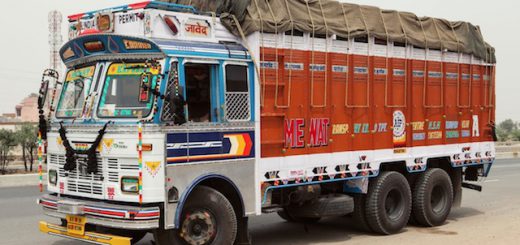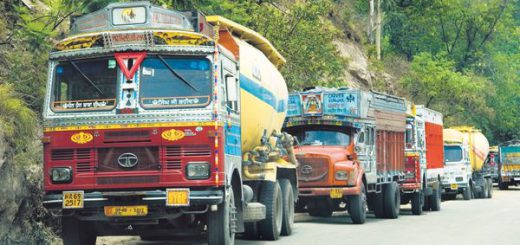Challenges before the Indian logistics sector
The Indian logistics sector is a vital contributor to the country’s economy, facilitating the movement of goods and services across various industries. With projections estimating its value to reach $350 billion by 2025, the sector holds immense growth potential. However, several persistent challenges hinder its progress and competitiveness. This article explores the key challenges faced by the Indian logistics sector and highlights the proposed solutions to overcome them.
One of the major challenges faced by the Indian logistics sector is higher logistics costs. India’s expenditure on logistics costs amounts to approximately 13-14% of its Gross Domestic Product (GDP), which is considerably higher than the global average of around 8%. This significant difference in logistics costs creates a competitiveness gap for Indian businesses. The competitiveness gap, estimated at $180 billion in 2020, is projected to widen to $500 billion by 2030 if it is not effectively addressed.
The high logistics costs directly impact the competitiveness of Indian businesses in the global market. It puts them at a disadvantage compared to their international counterparts, who have lower logistics costs. The higher costs make Indian goods less competitive in terms of pricing, affecting their ability to penetrate global markets. Closing this competitiveness gap is crucial for Indian businesses to effectively compete on an international scale and expand their presence in the global market.
Another challenge is India’s Logistics Performance Index (LPI) ranking. The LPI is an indicator of a country’s logistics performance based on various parameters such as efficiency of customs clearance, quality of infrastructure, ease of arranging shipments, tracking and tracing capabilities, and timeliness of deliveries. In 2018, India ranked 42nd on the LPI, trailing behind countries like Germany, the United Kingdom, Japan, Austria, China, and the United States (US).
Improving the LPI ranking is essential for enhancing the efficiency and competitiveness of the logistics sector. A higher LPI ranking signifies better logistics performance, which translates into smoother and more efficient movement of goods. It also indicates the ability to provide reliable and timely logistics services, which is crucial for attracting foreign investment and promoting trade. Enhancing the LPI ranking requires efforts to improve infrastructure, streamline processes, adopt advanced technologies, and enhance overall logistics capabilities.

Cost optimisation is a crucial aspect of addressing the challenges faced by the Indian logistics sector. Implementing measures to reduce logistics costs can have a significant impact on the competitiveness and profitability of businesses. One approach to cost optimisation is improving infrastructure efficiency. This involves investing in upgrading and modernising physical infrastructure such as roads, railways, ports, and terminals. By enhancing the quality and capacity of these infrastructure components, the overall efficiency of logistics operations can be improved, leading to reduced costs.
In addition to infrastructure improvements, adopting advanced technologies is vital for cost optimisation. Embracing automation, digitalisation, and data analytics can bring about transformative changes in the logistics sector. Automation can streamline various processes, reducing manual labour and associated costs. Digitalisation enables the digitisation of documents and transactions, reducing paperwork and improving the overall efficiency of logistics operations. Data analytics can provide valuable insights into supply chain performance, allowing for better decision-making and optimisation of routes, inventory management, and resource allocation. Technologies such as barcode scanning, RFID, and real-time tracking can significantly enhance tracking and tracing capabilities, improving operational efficiency and reducing costs.
Skill development and support for micro, small, and medium enterprises (MSMEs) are crucial for the growth and competitiveness of the logistics sector. Creating a skill-based supply base involves investing in training programmes and skill development initiatives to enhance the capabilities of the workforce. Additionally, implementing standardised vendor capability assessments ensures that MSMEs meet the required standards and quality benchmarks, enabling them to participate more effectively in the logistics sector. Collaboration between MSMEs and larger logistics players can promote knowledge sharing and capacity building, creating a more robust and efficient ecosystem.
Policy reforms and government initiatives play a crucial role in transforming the logistics sector. The Indian government has launched the National Logistics Policy (NLP) to create a trusted, reliable, cost-effective, resilient, and technologically advanced logistics ecosystem. The policy aims to reduce logistics costs from the current 14-18% of GDP to 8% by 2030, aligning with global best practices. By focusing on cost reduction, the policy aims to improve the competitiveness of Indian businesses. The NLP also sets the target of ranking in the top 25 countries in the Logistics Performance Index (LPI) by 2030, emphasising the importance of enhancing logistics efficiency and performance. To achieve these goals, the policy emphasises the creation of a data-driven decision-support mechanism to enable more efficient logistics operations and informed decision-making.
The role of global standards in improving India’s logistics sector is of utmost importance. Let’s delve deeper into each pointer to understand its significance:
Visibility: Global standards, such as barcode scanning on transport labels, play a vital role in capturing essential data. By implementing these standards, transparency, and visibility are ensured throughout the entire transport process. This enables stakeholders to have access to accurate and real-time information, leading to better decision-making and improved operational efficiency.
Interoperability: Standards enable seamless communication and collaboration among all stakeholders involved in logistics operations. With standardised processes and systems in place, different entities can easily exchange information and coordinate their activities. Unique identification and automated data capture mechanisms further enhance interoperability, ensuring smooth information sharing and reducing errors or delays caused by incompatible systems.
Tracking: Standards facilitate efficient tracking and identification of individual equipment or items across different locations. By adopting standardised tracking mechanisms, such as unique identification keys, logistics providers can easily monitor the movement of goods throughout the supply chain. This helps ensure that items are in the right place at the right time, reducing the risk of loss, theft, or misplacement.
Warehouse management: Global standards contribute to precise and timely inventory information, which is crucial for efficient warehouse management. By implementing standardised processes and technologies, logistics providers can accurately track inventory levels, monitor stock movement, and optimise inbound and outbound flows. This leads to improved inventory accuracy, reduced warehouse stock, and optimised on-shelf stock availability, ultimately enhancing overall warehouse efficiency.
The Indian logistics sector stands at the threshold of immense growth potential. By embracing global standards, harnessing advanced technologies, nurturing skills, and implementing effective policies, the Indian logistics sector can truly realise its potential, emerge as a global leader, and drive economic growth for the nation.
Read more at-https://shorturl.at/hjuzZ




Recent Comments